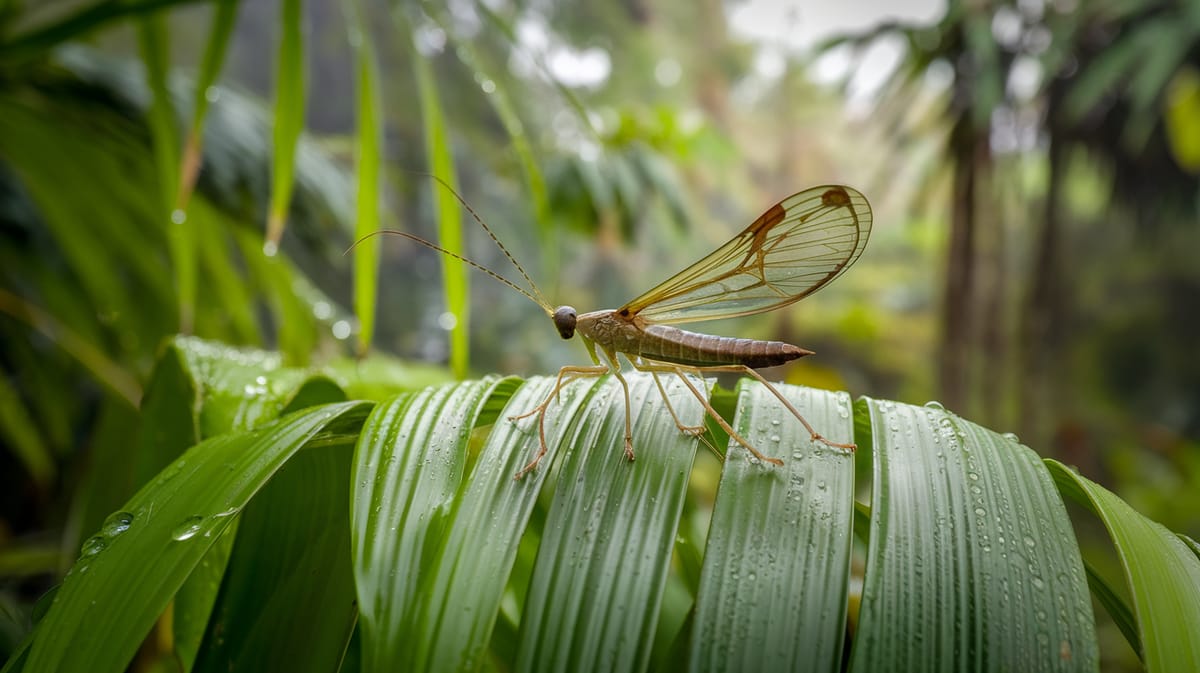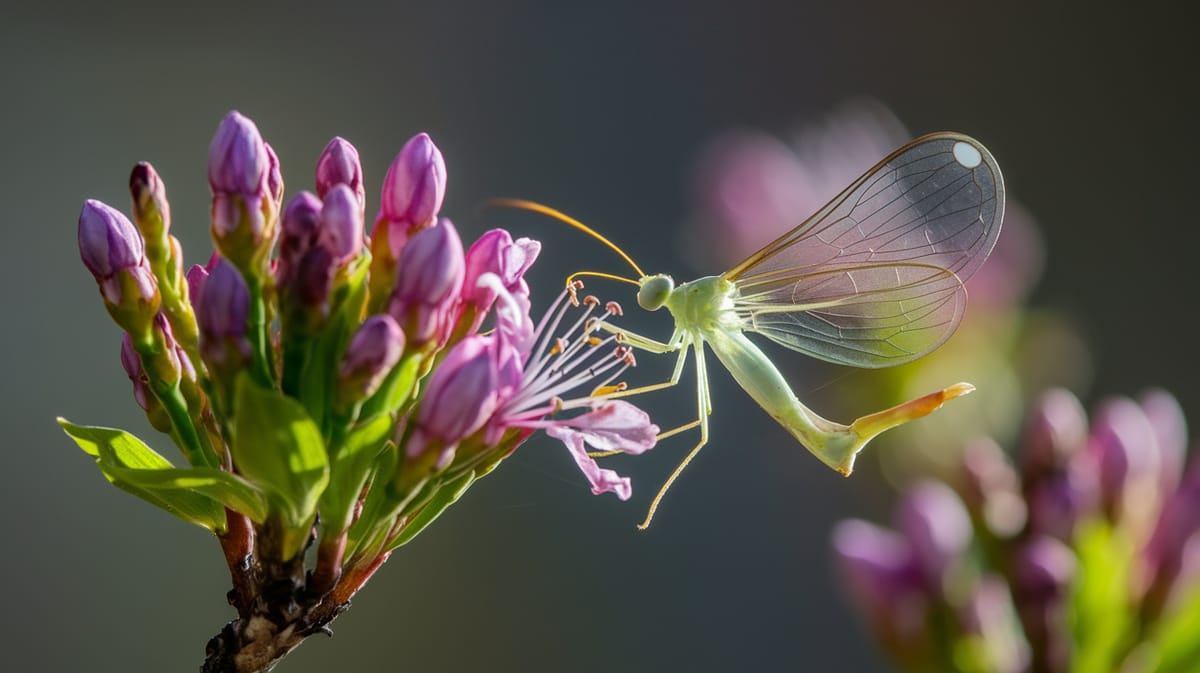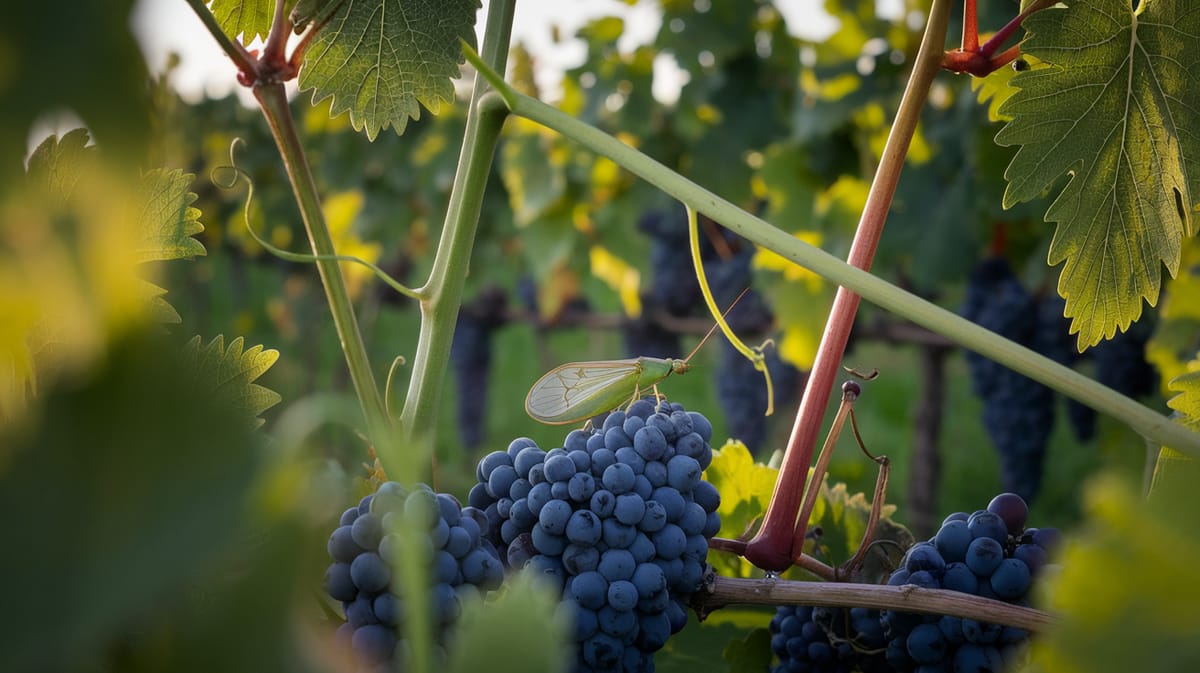Glassy Winged Sharpshooter
With iridescent wings and powerful legs, the Glassy Winged Sharpshooter swiftly traverses plants, feeding on sap and spreading diseases. This insect plays a crucial role in ecosystem dynamics.

Key Insights at a Glance
Did You Know?
Taxonomy & Classification
The Glassy Winged Sharpshooter exhibits remarkable adaptability in feeding and survival, aided by its specialized mouthparts for sap extraction and long-distance dispersal abilities. Let's understand the evolutionary journey and classification of these remarkable herbivores.
Global Presence
Native to the southeastern U.S., the Glassy Winged Sharpshooter has spread to California and parts of Mexico, demonstrating significant adaptability.
Evolutionary Adaptations
Evolving alongside plants, this insect has developed efficient xylem-feeding techniques, allowing survival through various climatic and environmental changes.
Lifecycle and Growth
A remarkable journey of transformation from Egg to Adult.
Egg
Laid in clusters on leaves, eggs develop under a protective white covering, ensuring safety from predators and environmental harm.
Nymph
Nymphs, resembling smaller adults, undergo five molts, gradually developing wing buds and feeding on plant sap.
Adult
Fully winged adults are highly mobile, feeding voraciously on plant fluids and playing a vital role in spreading plant diseases.
Dietary Habits
Sap-sucking insect known for its remarkable feeding abilities, it targets plant sap using specialized mouthparts.
| DIET TYPE | DESCRIPTION |
|---|---|
| Primary Diet | Primarily feeds on xylem sap of woody plants, especially citrus and grapevines. |
| Secondary Diet | Occasionally consumes sap from herbaceous plants, including ornamental and native species. |
| Occasional | Rarely feeds on alternative sap sources when preferred host plants are unavailable. |

Behaviour and Adaptations
Discover the fascinating adaptations that enable the Glassy Winged Sharpshooter to thrive in its ecosystem.
Xylem Feeding Efficiency
Specialized mouthparts allow effective extraction of nutrient-poor xylem sap.
Rapid Dispersal
Strong wings enable quick movement across large areas, aiding survival and colonization.
Vibrational Communication
Uses substrate vibrations for communication, crucial for mating and territory.
Ecosystem Impact
Exploring the ecological role of the Glassy Winged Sharpshooter in sustaining biodiversity.
Nutrient Cycling Facilitator
Aids in nutrient redistribution by excreting honeydew, supporting microbial and plant growth.
Food Chain Contributor
Serves as prey for birds and other predators, supporting diverse wildlife.
Habitat Engineering
Alters plant growth patterns, indirectly influencing habitat structure for other organisms.
Conservation Challenges
Understanding and addressing the major threats to Glassy Winged Sharpshooter populations.
Chemical Exposure
Pesticides used in agriculture harm sharpshooter populations and disrupt ecosystems.
Habitat Loss
Urban development and agriculture reduce the sharpshooter's natural habitats.
Climate Change
Altered weather patterns affect sharpshooter distribution and lifecycle.
Frequently Asked Questions
How long do Glassy Winged Sharpshooter live?
Glassy Winged Sharpshooters typically live for about six to nine months. Their lifespan can vary based on environmental conditions and availability of food sources. They are most active during warmer months, which influences their life cycle duration.
What do Glassy Winged Sharpshooter eat?
Glassy Winged Sharpshooters feed on plant sap, primarily from a wide range of host plants. They use their piercing mouthparts to extract fluid from xylem tissues, which provides them with water and nutrients.
Are Glassy Winged Sharpshooter poisonous?
Glassy Winged Sharpshooters are not poisonous to humans or pets. They pose no direct harm through toxins but can transmit plant diseases such as Pierce's disease, which affects crops like grapes, making them significant agricultural pests.
Are Glassy Winged Sharpshooter endangered?
Glassy Winged Sharpshooters are not considered endangered. They are widespread and adaptable, thriving in various environments. Their presence is more of a concern for agriculture due to their role in spreading plant pathogens.
What do Glassy Winged Sharpshooter symbolize?
Glassy Winged Sharpshooters do not hold any traditional symbolic meanings. They are primarily recognized for their impact on agriculture, particularly due to their role in spreading plant diseases that affect economically important crops.
Do Glassy Winged Sharpshooter bite?
Glassy Winged Sharpshooters do not bite humans. They are equipped with mouthparts designed for piercing plant tissues to feed on sap, not for biting or stinging people or animals.
What color are Glassy Winged Sharpshooter?
Glassy Winged Sharpshooters are typically brown with yellowish undersides. Their wings are partially transparent with brown veins, giving them a glassy appearance. This coloration helps them blend into their surroundings.
Does a Glassy Winged Sharpshooter have wings?
Yes, Glassy Winged Sharpshooters have wings. Their wings are transparent with brown venation, covering their bodies when at rest. These wings enable them to fly and move easily between host plants.
What does a Glassy Winged Sharpshooter look like?
Glassy Winged Sharpshooters are about 0.5 inches long with brown bodies and transparent wings. They have prominent, wedge-shaped heads and large, dark eyes. Their wings are glassy in appearance, aiding in camouflage.
Is a Glassy Winged Sharpshooter an insect?
Yes, the Glassy Winged Sharpshooter is an insect. It belongs to the order Hemiptera, commonly known as true bugs, and is part of the Cicadellidae family, which includes leafhoppers.
Related Insects
Discover insects with similar characteristics to Glassy Winged Sharpshooter - including shared habitats, diets, and taxonomic classifications
Share this profile
Help others discover Glassy Winged Sharpshooter
